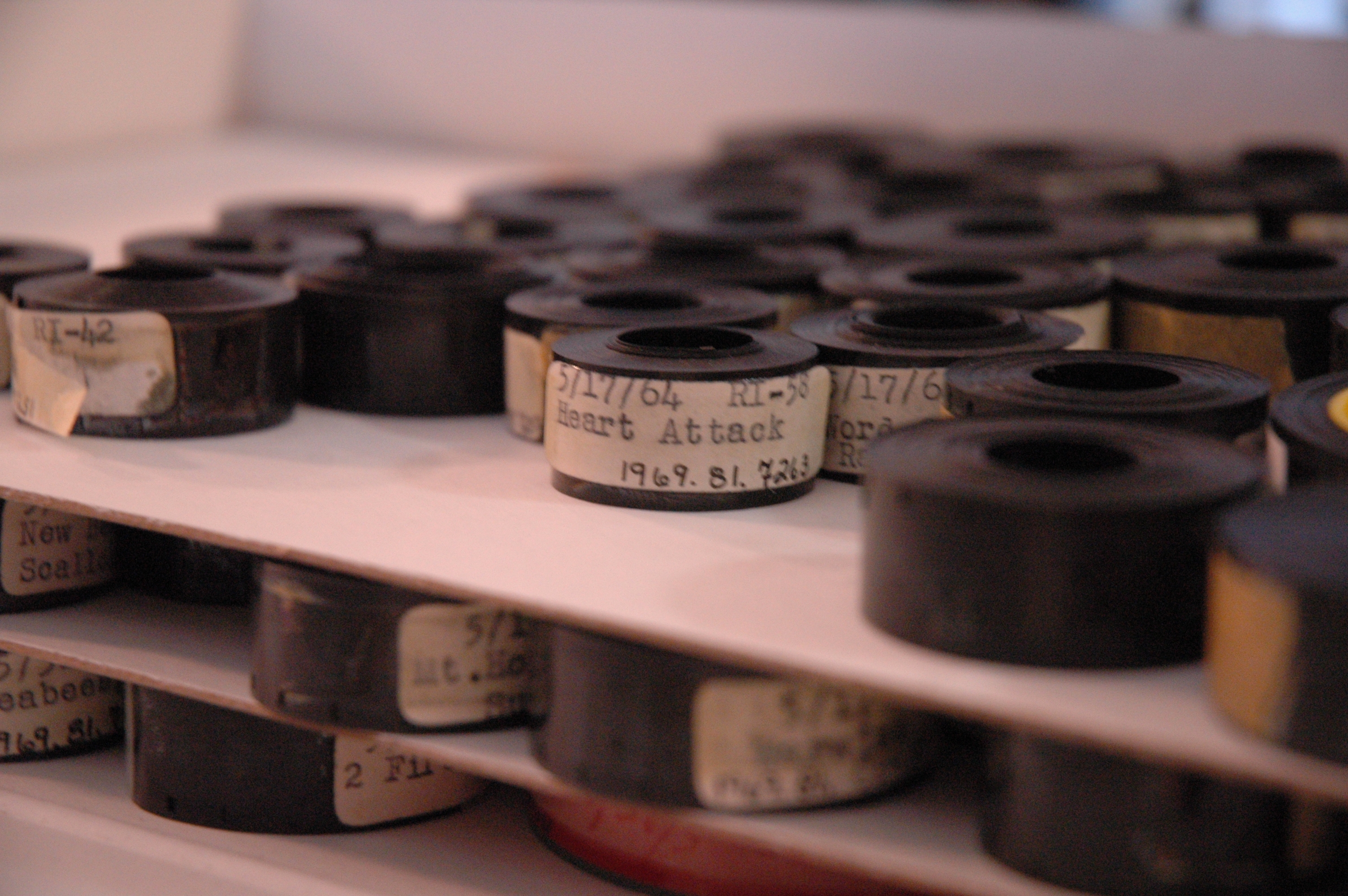Well, these are not exactly the kind of sweet and delicious donuts that you pickup at your local coffee shop. These are local television news stories captured on 16mm reversal film. Unless a copy was made this is the only moving image document of an event that has survived.
Unfortunately, many news-films did not endure the test of time as many were loaded into dumpsters to make space for the new videotape format that was less expensive to produce.
After the film was shot, it would be processed in house and then loaded into the film-chain, sometimes still wet, and projected at the appropriate time into a video camera for broadcast. If the film was shot silently then the news anchors would read the story as the film was run describing to the viewers what had happened.
The film would then be labeled with a brief title, date and reference number and rolled into little plastic donuts and filed away.
What you see in the boxes below are individual news clips that capture the daily history of Rhode Island politics, sports, crime, entertainment, social issues, and weather events such as the Blizzard of 1978. On average, a roll of film equaled approximately 50 feet with a running time of about 1 minute. One box will typically hold one month’s worth of “donuts”.


We hold material from local news stations WJAR, WPRI, WSBE and WTEV. The majority of these films have not been cataloged with only WJAR having minimal catalog records available for each story. These films can be searched via our on-line catalog, NETOP.
No other media captures the richness of human culture than film. Preservation of and accessibility to these donuts of history is one of our unique challenges.
Written by James DaMico, Librarian
